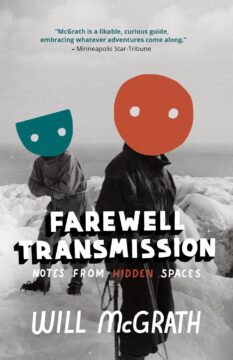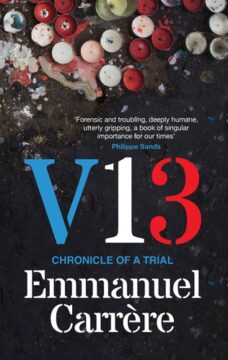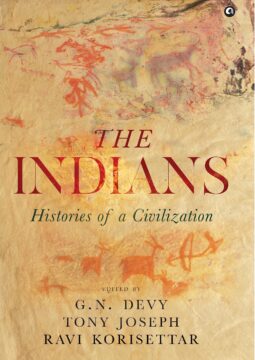Enjoying the content on 3QD? Help keep us going by donating now.
Category: Recommended Reading
How Scientific American’s Departing Editor Helped Degrade Science
Jesse Singal at Reason:
 When Scientific American was bad under Helmuth, it was really bad. For example, did you know that “Denial of Evolution Is a Form of White Supremacy“? Or that the normal distribution—a vital and basic statistical concept—is inherently suspect? No, really: Three days after the legendary biologist and author E.O. Wilson died, SciAm published a surreal hit piece about him in which the author lamented “his dangerous ideas on what factors influence human behavior.” That author also explained that “the so-called normal distribution of statistics assumes that there are default humans who serve as the standard that the rest of us can be accurately measured against.” But the normal distribution doesn’t make any such value judgments, and only someone lacking in basic education about stats—someone who definitely shouldn’t be writing about the subject for a top magazine—could make such a claim.
When Scientific American was bad under Helmuth, it was really bad. For example, did you know that “Denial of Evolution Is a Form of White Supremacy“? Or that the normal distribution—a vital and basic statistical concept—is inherently suspect? No, really: Three days after the legendary biologist and author E.O. Wilson died, SciAm published a surreal hit piece about him in which the author lamented “his dangerous ideas on what factors influence human behavior.” That author also explained that “the so-called normal distribution of statistics assumes that there are default humans who serve as the standard that the rest of us can be accurately measured against.” But the normal distribution doesn’t make any such value judgments, and only someone lacking in basic education about stats—someone who definitely shouldn’t be writing about the subject for a top magazine—could make such a claim.
Some of the magazine’s Helmuth-era output made the posthumous drive-by against Wilson look Pulitzer-worthy by comparison.
More here.
Enjoying the content on 3QD? Help keep us going by donating now.
The Historical and Philosophical Origins of Goth and Gothic Horror
Enjoying the content on 3QD? Help keep us going by donating now.
Thursday Poem
The Great Watchers
Think of those great watchers of the sky,
the shepherds, the magi, how they looked
for a thousand years and saw there was order,
who learned not only Light would return,
but the moment she’d start her journey.
No writing then. The see-ers gave
what they knew to the song-makers —
the dreamy sons, the daughters who hummed
as they spun, the priestly keepers of story —
and the clever-handed heard, nodded,
and turned poems into New Grange,
Stonehenge, The Great Temple of Karnak.
by Nils Peterson
from An Autumnal, 2024
Enjoying the content on 3QD? Help keep us going by donating now.
American Boys
Will McGrath at The Believer:

Cedar-Riverside was humming. The boys were looking fresh—Frenchy with his hair twisted up, Saiid’s beard trimmed tight—everybody edged up and faded up and straight from the barber’s chair. Once their moms were out of sight, a few boys snugged durags over their heads, and then Wali started talking about how one time his mom caught him wearing a wave cap like that and smack—he pantomimed a big open hand—too hip-hop. Wali had the boys rolling. Relatives were milling in the shadow of C Building, uncles and older brothers and former players slipping cash into the boys’ palms, something for the journey. The boys were doing that teenage-boy thing where their bodies are short-circuiting on adrenaline but they’re trying not to show it, grabbing and slap-fighting and punching a little too hard. Kids were calling down from the balconies, yelling final Somali encouragements, and even Riverside Plaza itself—those looming brutalist towers, born of 1960s utopian public housing fever dreams and then left to molder—even those concrete towers were glowing. A lateafternoon rain had scoured clean the buildings. The towers’ iconic red, yellow, blue, and white panels were popping in the Minneapolis golden hour, the women’s hijabs and headscarves were popping, the boys’ new kicks were popping, everything was looking nice.
more here.
Enjoying the content on 3QD? Help keep us going by donating now.
The Patron Saint of Surf Lit
Dan Reiter at The Millions:
 No quote from antiquity sums up the metaphysical challenge of being a surfer more aptly than this one, from Marcus Aurelius, the last Emperor of the Pax Romana: “There is a river of creation, and time is a violent stream. As soon as one thing comes into sight, it is swept past and another is carried down: it too will be taken on its way.” Waves, by their nature, do not hold still. “Catching” one, therefore, can be a kind of thought experiment, a quantum paradox. To hitch yourself onto a surge of liquid energy—to soar across its frothing surface—demands both physical and mental suspension of disbelief.
No quote from antiquity sums up the metaphysical challenge of being a surfer more aptly than this one, from Marcus Aurelius, the last Emperor of the Pax Romana: “There is a river of creation, and time is a violent stream. As soon as one thing comes into sight, it is swept past and another is carried down: it too will be taken on its way.” Waves, by their nature, do not hold still. “Catching” one, therefore, can be a kind of thought experiment, a quantum paradox. To hitch yourself onto a surge of liquid energy—to soar across its frothing surface—demands both physical and mental suspension of disbelief.
Catching a wave is a tricky business in itself; to do it on the printed page requires yet another level of imagination. Which might explain why so few surf-themed books have tapped into the literary mainline. Notwithstanding the stray bubble-gum-kitsch bestseller (Frederick Kohner’s Gidget) or the outlier Pulitzer Prize–winning memoir (William Finnegan’s Barbarian Days), the canon of “surf literature” is relatively thin.
more here.
Enjoying the content on 3QD? Help keep us going by donating now.
Wednesday, November 20, 2024
The Genetic Book of the Dead – the great biologist’s swansong
Adam Rutherford in The Guardian:
 All things must pass, but some leave legacies. That is the story of life on Earth. Fossilised remains of organisms represent just one of the various treasure troves of information about how life used to be, one set of clues to why it is the way it is today. In the early 20th century, genes entered the storehouse of evidence for evolution, first as theoretical particles, later as the unit of selection, and today with molecular precision. Some 165 years after Darwin’s Origin of Species, evolution by natural selection is incontrovertible, the proof of it irrefutable and bounteous.
All things must pass, but some leave legacies. That is the story of life on Earth. Fossilised remains of organisms represent just one of the various treasure troves of information about how life used to be, one set of clues to why it is the way it is today. In the early 20th century, genes entered the storehouse of evidence for evolution, first as theoretical particles, later as the unit of selection, and today with molecular precision. Some 165 years after Darwin’s Origin of Species, evolution by natural selection is incontrovertible, the proof of it irrefutable and bounteous.
Richard Dawkins has done the lord’s work in sharing this radical idea for more than a third of that time, partly through research, but with wider impact in his general writing. This book, one of nearly a dozen he has written about evolution, looks set to be his last (he has called a tour to support it The Final Bow).
More here.
Enjoying the content on 3QD? Help keep us going by donating now.
How Stem Cells Stay Young
Rohini Subrahmanyam in The Scientist:
 Aging is inevitable for most cell types in the human body, but hematopoietic stem cells (HSCs) seem to defy the process. They retain their self-renewing ability almost throughout an organism’s lifetime and exhibit a delayed onset of typical hallmarks of aging like DNA damage or protein aggregation. “Stem cells are really remarkable in their longevity,” said Andre Catic, a researcher working on aging at the Baylor College of Medicine.
Aging is inevitable for most cell types in the human body, but hematopoietic stem cells (HSCs) seem to defy the process. They retain their self-renewing ability almost throughout an organism’s lifetime and exhibit a delayed onset of typical hallmarks of aging like DNA damage or protein aggregation. “Stem cells are really remarkable in their longevity,” said Andre Catic, a researcher working on aging at the Baylor College of Medicine.
Previously, scientists found that one reason contributing to HSC longevity was that they could exist in a functionally inactive state for prolonged periods.1 Now, Catic and his team found another clue as to how these cells maintain their youth. In a study published recently in Nature Cell Biology, they reported that HSCs contain high levels of a protein cyclophilin A which prevents these cells from rapid aging.2 Understanding mechanisms of how HSCs avoid the wear and tear of senescence has wide-ranging implications, from figuring out cells’ fundamental anti-aging secrets to determining how these mechanisms breaking down could lead to leukemia.
More here.
Enjoying the content on 3QD? Help keep us going by donating now.
The AI Art Turing Test

Scott Alexander at Astral Codex Ten:
Last month, I challenged 11,000 people to classify fifty pictures as either human art or AI-generated images.
I originally planned five human and five AI pictures in each of four styles: Renaissance, 19th Century, Abstract/Modern, and Digital, for a total of forty. After receiving many exceptionally good submissions from local AI artists, I fudged a little and made it fifty. The final set included paintings by Domenichino, Gauguin, Basquiat, and others, plus a host of digital artists and AI hobbyists.
1: Most People Had A Hard Time Identifying AI Art
Since there were two choices (human or AI), blind chance would produce a score of 50%, and perfect skill a score of 100%.
The median score on the test was 60%, only a little above chance. The mean was 60.6%. Participants said the task was harder than expected (median difficulty 4 on a 1-5 scale).
How meaningful is this? I tried to make the test as fair as possible by including only the best works from each category; on the human side, that meant taking prestigious works that had survived the test of time; on the AI side, it meant tossing the many submissions that had garbled text, misshapen hands, or some similar deformity. But this makes it unrepresentative of a world where many AI images will have these errors.
More here.
Enjoying the content on 3QD? Help keep us going by donating now.
The quest for fusion energy
Raymond Zhong in the New York Times:
 Big-name investors including Bill Gates, Jeff Bezos, Vinod Khosla and Sam Altman have staked hundreds of millions of dollars on this, fusion’s potential Kitty Hawk moment: the one that shows that the limits of our species’ mastery have once again been catapulted forward.
Big-name investors including Bill Gates, Jeff Bezos, Vinod Khosla and Sam Altman have staked hundreds of millions of dollars on this, fusion’s potential Kitty Hawk moment: the one that shows that the limits of our species’ mastery have once again been catapulted forward.
Today’s fusion start-ups aren’t just preparing for this moment in the lab. They are signing presale deals with customers, developing supply chains, cultivating a work force, talking with regulators — all the elements that will be needed to make fusion an affordable, practical power source, not just a science experiment.
And yet, closer than ever does not necessarily mean close. Fusion’s history is a graveyard of missed deadlines and thwarted milestones, bursts of excitement followed by bruising disappointments.
The sunny view is that the start-ups are moving more quickly than government labs ever could. They can try, fail and try again.
More here.
Enjoying the content on 3QD? Help keep us going by donating now.
Philosopher Michael Sandel on What Trump’s Win Says About American Society
Enjoying the content on 3QD? Help keep us going by donating now.
Review of “V13” by Emmanuel Carrère – harrowing account of the Paris attacks trial
Chris Power in The Guardian:
 In the early evening of 12 November 2015, three cars left Charleroi in Belgium, arriving a few hours later at a rented house in the northern suburbs of Paris. The occupants of the cars – or “the death convoy”, as they called it – were Islamic State terrorists who, the following night, rampaged through the French capital. Three attacked the Stade de France, where a football friendly between France and Germany was being played. Arriving late, they were denied entry to the stadium and blew themselves up outside.
In the early evening of 12 November 2015, three cars left Charleroi in Belgium, arriving a few hours later at a rented house in the northern suburbs of Paris. The occupants of the cars – or “the death convoy”, as they called it – were Islamic State terrorists who, the following night, rampaged through the French capital. Three attacked the Stade de France, where a football friendly between France and Germany was being played. Arriving late, they were denied entry to the stadium and blew themselves up outside.
At the same time, another group opened fire on cafes and bars in the city centre. Two members fled, while another walked into a restaurant and detonated his suicide vest. Meanwhile, the remaining trio entered the Bataclan theatre, where a crowd of 1,500 were attending a gig by the US rock band Eagles of Death Metal. The attack and subsequent siege lasted two and a half hours and ended with all three terrorists dead. Across the city, 130 people had been murdered and hundreds more injured.
Five years later, in the autumn of 2020, on the eve of publishing his new book, Yoga, and reeling from a difficult few years – mental illness, divorce, legal battles – Emmanuel Carrère was hunting for a subject.
More here.
Enjoying the content on 3QD? Help keep us going by donating now.
Slavoj Žižek’s The Sublime Object of Ideology with Rafael Winkler
Wednesday Poem
Dawn
Clouds rise from their nests
with flapping wings, they whisper
of worn leather, bracken, long
horizons, and the manes of dark
horses. In the waking stream
the stones lie like chestnuts
in a glass bowl. I pass the bones
of an old harrow thrown on its side
in the ditch.
Now the sun appears.
It is a fish wrapped in straw.
Its scales fall on the sleeping
town with its eyeless granaries
and necklace of boxcars. Soon
the blue wind will flatten the roads
with a metallic palm, the glitter
of granite will blind the eyes.
But not yet. The beetle still
stares from the riding moon, the ship
of death stands motionless on
frozen waves: I hear
the silence of early morning
rise from the rocks.
from Poetic Outlaws
Enjoying the content on 3QD? Help keep us going by donating now.
Should India Speak a Single Language?
Samanth Subramanian at the New Yorker:

In some Indian languages, the word for “language” is bhasha—the vowels long and warm, as in “car” or “tar.” It has a formal weight and a refined spirit. It comes to us from the classical heights of Sanskrit, and it evokes a language with a script and a literature, with newspapers and codified grammar and chauvinists and textbooks. But there is another word, boli. It, too, refers to language, but its more accurate meaning is “that which is spoken.” In its sense of the oral, it hints at colloquialisms, hybridity, and a demotic that belongs to the streets. The insinuation is that a bhasha is grander and more sophisticated than a boli. The language of language infects how we think about language.
For more than forty years, the distance between these two words has preoccupied the literary scholar Ganesh Devy. He knows precisely when it all began. In 1979, as he was completing his Ph.D. in English literature at Shivaji University, in the Indian city of Kolhapur, he found in the library a commentary on India’s censuses. The 1961 census had identified sixteen hundred and fifty-two “mother tongues”—many of them, like Betuli or Khawathlang, with speakers numbering in the single digits.
more here.
Enjoying the content on 3QD? Help keep us going by donating now.
Tuesday, November 19, 2024
A revealing portrait of novelist Thomas Hardy as a womanizer
Charlotte Gordon in The Washington Post:
Enjoying the content on 3QD? Help keep us going by donating now.
The Neural Circuity Driving Cancer-Related Wasting Disease
Sahana Sitaraman in The Scientist:
 Cancer cachexia, or the wasting syndrome, is a catastrophic condition that causes dramatic and involuntary loss of muscle mass, fat and weight, alongside extreme fatigue, anorexia and anemia in patients with cancer.1 This severe stress reduces the body’s ability to respond to treatments, worsening prognosis and drastically accelerating death.
Cancer cachexia, or the wasting syndrome, is a catastrophic condition that causes dramatic and involuntary loss of muscle mass, fat and weight, alongside extreme fatigue, anorexia and anemia in patients with cancer.1 This severe stress reduces the body’s ability to respond to treatments, worsening prognosis and drastically accelerating death.
“More often than not, if you have two patients that have the exact same stage of disease, pathology of disease, but one of those cancers figured out how to promote wasting in the body, [that person] will live half as long as the other person,” said Puneeth Iyengar, a radiation oncologist at Memorial Sloan Kettering Cancer Center. Cachexia affects approximately 50 to 80 percent of patients with cancer and is the primary cause of death in 30 percent of patients. Yet, robust remedies for the condition are lacking. “We don’t know enough about [cancer cachexia] biology. It’s a very complex problem,” Iyengar said.
More here.
Enjoying the content on 3QD? Help keep us going by donating now.
Ayad Akhtar Wants Writers to Reckon with AI
Ronald K. Fried at The Millions:
 McNeal, the new play by Ayad Akhtar, who won the Pulitzer Prize for Disgraced, focuses on an egocentric, self-destructive white male novelist, played by Robert Downey, Jr. The fictional Jacob McNeal—think Mailer or Roth at their worst—wins the Nobel Prize early in the play, but he’s guarding a secret: his latest novel was composed with an uncredited coauthor, an AI chatbot. The production, which considers the controversial notion that artificial intelligence might be a useful creative tool, closes on November 24 after a nearly sold-out run at Lincoln Center. Despite a largely negative critical reception, the show has touched a nerve, which in my view is one of the jobs of a serious writer.
McNeal, the new play by Ayad Akhtar, who won the Pulitzer Prize for Disgraced, focuses on an egocentric, self-destructive white male novelist, played by Robert Downey, Jr. The fictional Jacob McNeal—think Mailer or Roth at their worst—wins the Nobel Prize early in the play, but he’s guarding a secret: his latest novel was composed with an uncredited coauthor, an AI chatbot. The production, which considers the controversial notion that artificial intelligence might be a useful creative tool, closes on November 24 after a nearly sold-out run at Lincoln Center. Despite a largely negative critical reception, the show has touched a nerve, which in my view is one of the jobs of a serious writer.
I talked with Akhtar about his new play, the future of AI, and why he dislikes the advice to “show, don’t tell.”
Ronald K. Fried: When did you first think you could write something dramatic about A.I.?
Ayad Akhtar: February of ‘23. GPT had been live for about three months. And it was already clear to me that the future was going to be seriously impacted. And by April of ‘23, I saw a few things in Hollywood that shocked and astonished me. It was clear to me that the technology was far more powerful than we realized from a story point of view, and it was just a matter of time before this technology was going to start affecting the production of writing, creative writing.
More here.
Enjoying the content on 3QD? Help keep us going by donating now.
A new nuclear arms race is beginning and it will be far more dangerous than the last one
Jessica T Mathews in The Guardian:
 Decades of agonisingly difficult negotiations built up a dense structure of treaties, agreements and even a few unilateral moves dealing with offensive and defensive nuclear weapons of short, medium and long range, with provisions for testing, inspections and an overflight regime for mutual observation. Often the two sides would only give up systems they no longer wanted. Frequently the language of the agreements was the basis of future friction. On the US side, the political price of securing Senate ratification of treaties could be extremely high.
Decades of agonisingly difficult negotiations built up a dense structure of treaties, agreements and even a few unilateral moves dealing with offensive and defensive nuclear weapons of short, medium and long range, with provisions for testing, inspections and an overflight regime for mutual observation. Often the two sides would only give up systems they no longer wanted. Frequently the language of the agreements was the basis of future friction. On the US side, the political price of securing Senate ratification of treaties could be extremely high.
But for all its shortcomings, arms control brought down the total number of nuclear weapons held by the two countries from 60,000 to roughly 11,000 today. (The exact number is classified.) Under the most recent treaty, New Start (strategic arms reduction treaty), signed in 2010, each side is limited to 1,550 deployed weapons, with the rest in storage. By any accounting, that 80% drop (95% counting just deployed weapons) is – or was – a notable achievement.
Unfortunately, the past tense is correct, because since the US withdrew from the anti-ballistic missile (ABM) treaty in 2002 – thereby legitimising the unilateral renunciation of an agreement by one party if it no longer finds the restrictions to its taste – the other agreements have fallen one by one.
More here.
Enjoying the content on 3QD? Help keep us going by donating now.
David Deutsch: The Era of Man, Popper, and Western Civilization
Enjoying the content on 3QD? Help keep us going by donating now.

 The Monty Python sketch of Thomas Hardy writing “The Return of the Native” takes place inside a packed soccer stadium with an announcer providing play-by-play analysis of the author’s glacial writing process. In hushed tones, the announcer says that Hardy has started to write, but wait, “oh no, it’s a doodle … a piece of meaningless scribble.” At last, Hardy writes “the,” but then crosses it out. In the time it takes to play an entire soccer match, he barely produces a sentence. In fact, Hardy was a speedy writer. He created “The Mayor of Casterbridge” so quickly that if he were outside, he “would scribble on large dead leaves or pieces of stone or slate that came to hand,” Paula Byrne writes in a new biography, “
The Monty Python sketch of Thomas Hardy writing “The Return of the Native” takes place inside a packed soccer stadium with an announcer providing play-by-play analysis of the author’s glacial writing process. In hushed tones, the announcer says that Hardy has started to write, but wait, “oh no, it’s a doodle … a piece of meaningless scribble.” At last, Hardy writes “the,” but then crosses it out. In the time it takes to play an entire soccer match, he barely produces a sentence. In fact, Hardy was a speedy writer. He created “The Mayor of Casterbridge” so quickly that if he were outside, he “would scribble on large dead leaves or pieces of stone or slate that came to hand,” Paula Byrne writes in a new biography, “